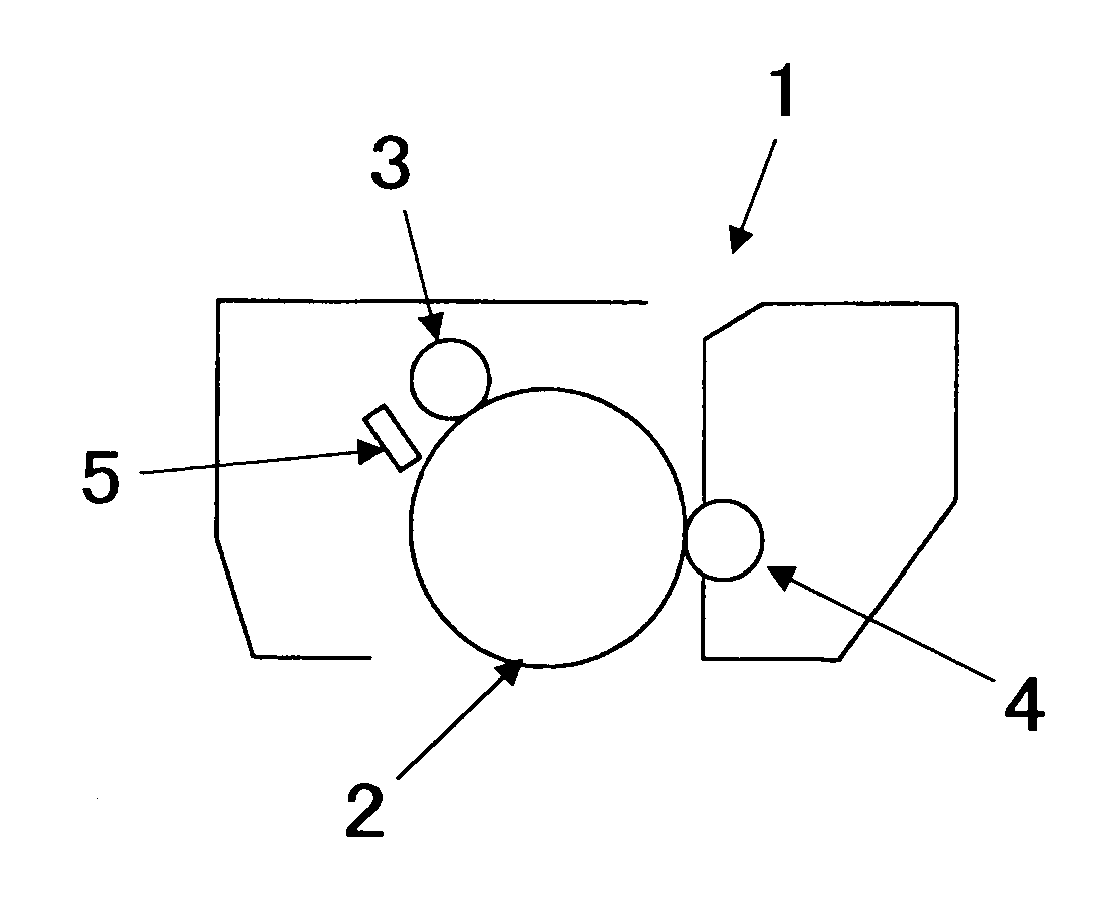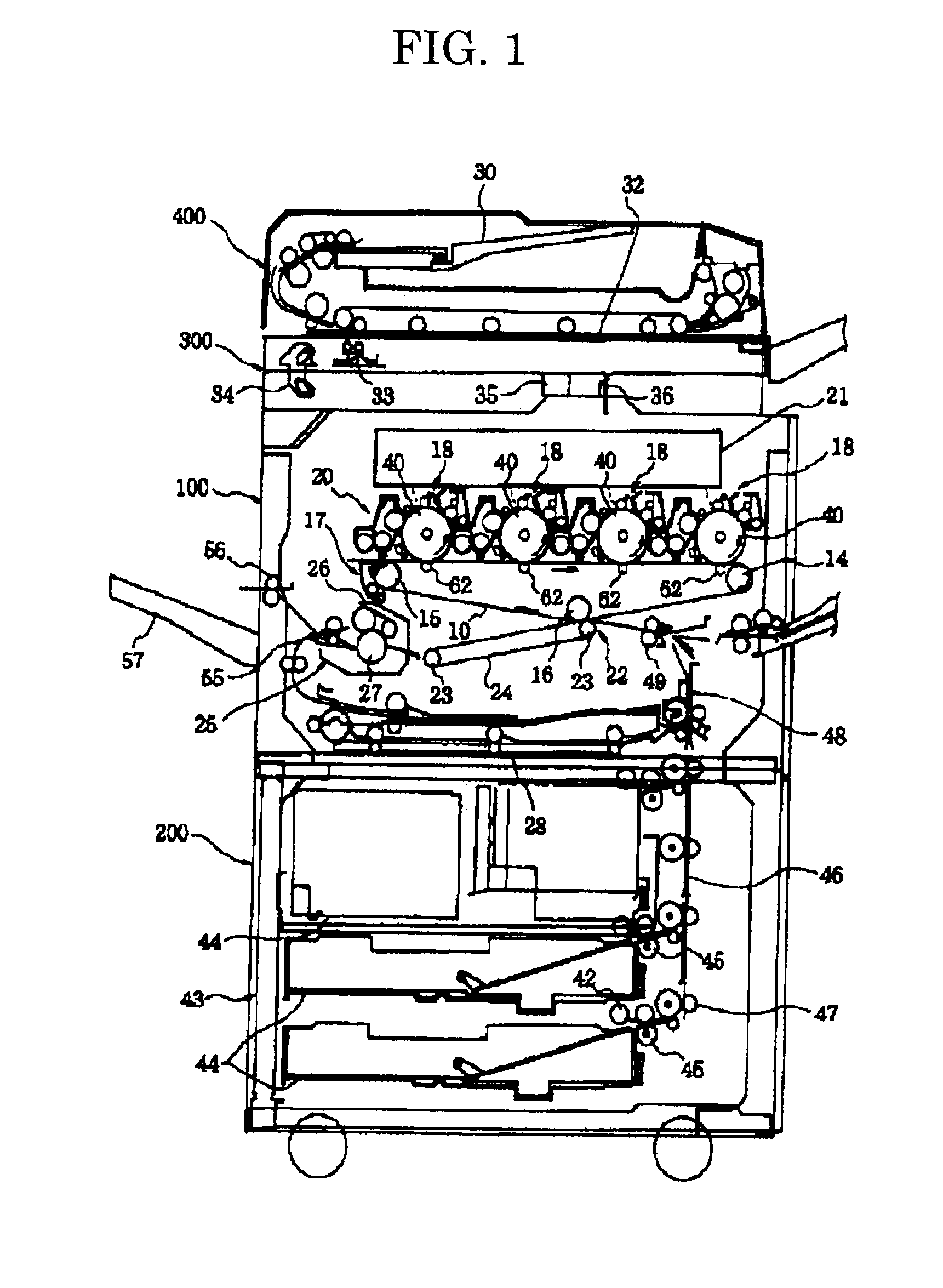Electrostatic image developing toner, developer, image forming apparatus, image forming method, and process cartridge
a technology of developing toner and developing toner, which is applied in the direction of electrographic process, electrographic process using charge pattern, instruments, etc., can solve the problems of low toner yield, difficult uniform dispersibility of colorants and charge controlling agents in thermoplastic resins, and low toner yield, so as to achieve high toner yield and maintain hot offset resistance. , the effect of superior low-temperature fixability
- Summary
- Abstract
- Description
- Claims
- Application Information
AI Technical Summary
Benefits of technology
Problems solved by technology
Method used
Image
Examples
examples
[0239]Hereinafter, the present invention will be further described with reference to Examples, which shall not be construed as limiting the scope of the present invention. In the descriptions in the following examples, “part(s)” mean “part(s) by mass”.
production examples 1 and 2
Production of Resin (b)
[0240]In an autoclave reaction vessel equipped with a thermometer, a stirrer and a nitrogen inlet tube, the materials shown in the column of “Polyester Diol (b11)” of Table 1, 2 parts of 2-ethylhexyl tin were charged and subjected to a ring-opening polymerization reaction at 160° C. under normal pressure for 3 hours, the reaction product was further reacted at 130° C. under normal pressure. The resin taken out from the reaction vessel was cooled to the room temperature, and then pulverized into particles to obtain Polyester Diols (b-11)-1 and (b-11)-2 each containing a polyhydroxycarboxylic acid skeleton. Next, the materials shown in the column “Polyester Diol (b12) of Table 1 were dehydration-condensed to obtain Polyester Diols (b12)-1 and (b12)-2. Then, Polyester Diol (b12)-1 and Polyester Diol (b-11)-1 were dissolved in methylethylketone. Polyester Diol (b-12)-2 and Polyester Diol (b-11)-2 were dissolved in methylethylketone. Subsequently, IPDI provided as ...
production examples 3 and 4
Production of Resin (b)
[0241]L-lactide, D-lactide, ε-caprolactone, and tin octylate were each added in an amount of the parts by mass shown in Table 2 into a four-necked flask and then heated and melted at a temperature of 190° C. for 20 minutes under a nitrogen atmosphere. Thereafter, residual lactide and caprolactone were distilled away under reduced pressure, thereby obtaining [Resin b-3] and [Resin b-4].
TABLE 2L-lactide(partD-lactideε-caprolactoneoctyltinby mass)(part by mass)(part by mass)(part by mass)Resin b-38020101Resin b-4703051
[0242]—Synthesis of Polyester Prepolymer—
[0243]In a reaction vessel equipped with a condenser, a stirrer and a nitrogen inlet tube, 720 parts of ethylene oxide (2 mol) adduct of bisphenol A, 90 parts of propylene oxide (2 mol) adduct of bisphenol A, 290 parts of terephthalic acid, 25 parts trimellitic anhydride and 2 parts of dibutyltin oxide were charged and reacted under normal pressure at 230° C. for 8 hours. Then, the reaction product was furthe...
PUM
| Property | Measurement | Unit |
|---|---|---|
| Fraction | aaaaa | aaaaa |
| Acid value | aaaaa | aaaaa |
| Acid value | aaaaa | aaaaa |
Abstract
Description
Claims
Application Information
 Login to View More
Login to View More - R&D
- Intellectual Property
- Life Sciences
- Materials
- Tech Scout
- Unparalleled Data Quality
- Higher Quality Content
- 60% Fewer Hallucinations
Browse by: Latest US Patents, China's latest patents, Technical Efficacy Thesaurus, Application Domain, Technology Topic, Popular Technical Reports.
© 2025 PatSnap. All rights reserved.Legal|Privacy policy|Modern Slavery Act Transparency Statement|Sitemap|About US| Contact US: help@patsnap.com



